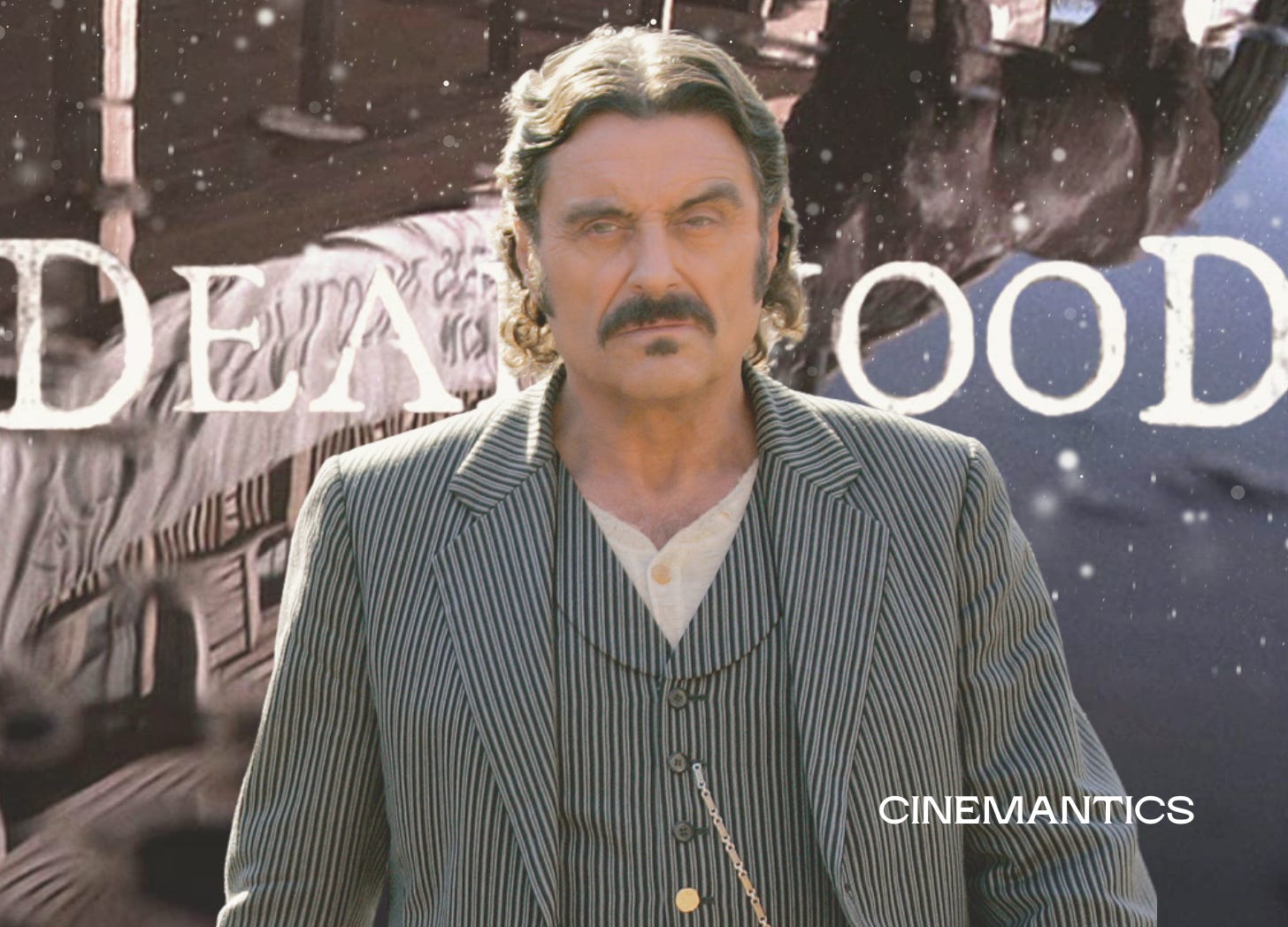The Meaning Behind Deadwood’s Opening Credits
"The world ends when you’re dead. Until then, you got more punishment in store. Stand it like a man, and give some back." ~ Al Swearengen
HBO’s Deadwood and its coda Deadwood: The Movie (aptly named) is a series about transformation. Set in the 1870s during the lawless days before the Dakota Territory’s annexation, it charts the evolution of a muddy, blood-soaked mining camp into an American town governed by law, commerce, and the nobler ambitions of the human spirit. This transformation, the brutal taming of the frontier, is encapsulated in the show’s opening credit sequence. It distills Deadwood’s core themes into a single visual narrative through a subtle, masterful juxtaposition of images.
The most potent of these images is the unbridled, powerful, and wild stallion charging through the wilderness into the heart of the developing town of Deadwood. It is an image rich with symbolism: the untamed West within and without is a force of nature soon to be subdued, distorted, and ultimately erased by the advancing tide of civilization.
The sequence begins in mud and fire, products of a society being born. There is a hard cut to striking shots of the natural world—lush forests, sprawling landscapes, and a galloping stallion. The horse embodies the wild, unregulated freedom that defined the American frontier before law arrived in places like Deadwood.
It is no accident that the stallion stands alone; the West was an era of rugged individualism, where survival often depended on cunning, strength, and force. The untamed beauty of the stallion parallels the untouched wilderness, evoking a land still beyond the grasp of human control. However, the West cannot remain untamed forever because most human beings cannot abide and thrive in such a state.
The sequence soon alternates between the stallion’s unrestrained sprint and the rapidly expanding camp of Deadwood. We see gold being sifted, men swinging pickaxes, whiskey being poured, and rough-hewn wooden structures forming the framework of a town. The swift contrast of the wild horse with these images of human endeavor suggests an impending collision where nature and lawlessness will inevitably yield to governance, commerce, and the institutions of civilization.
Then comes the defining moment. The stallion, having charged through the wilderness, arrives in Deadwood’s muddy thoroughfare. Its reflection shimmers in a puddle—a distorted, fleeting image of its identity. The wild stallion, still physically present, is now merely a reflection, a shadow of itself. The mud, a blend of nature and human presence, absorbs the reflection of the stallion until it vanishes. The stallion's disappearance signals the impending end of the Western frontier as the forces of order, industry, and law take hold. What was once wild, natural, and free is now subdued and confined within the structures of human society.
This symbolic transition lies at the heart of Deadwood’s thematic concerns. The series does not romanticize civilization but presents its arrival as often ugly, violent, and morally ambiguous. Law and order in Deadwood are rarely imposed through idealistic principles and democratic processes but rather through ruthless pragmatism, bloodshed, and compromise.
As the stallion disappears into the mud, the noble myth of Western expansion dissolves into a murkier reality where men like Al Swearengen and Seth Bullock must advance the private and public good of Deadwood. These figures do not bring order out of nothing; they bend the chaotic nature of man within and the world without to their will, often through accident and force rather than reflection and choice. The frontier is not so much tamed as repurposed, its baser instincts and passions redirected into the relentless march of American expansion and man’s inherent desire to dominate.
By the time the credits fade to black, the transformation is complete. The stallion is gone, leaving behind the fledgling town where order is often violently forged from lawlessness. The West, once wild, is evolving into something new. Whether this transformation is a triumph, a tragedy, or both is a question Deadwood leaves us to decide. However, the credits provide an unavoidable dilemma: the exceptional ambitions and talents needed for founding society must often vanish to keep it.
‘Deadwood’ and ‘Deadwood: The Movie’ are written, created, and produced by David Milch and stars Ian McShane and Timothy Olyphant. They are rated TV-MA and streaming on Max.




Reminds me how good Deadwood is - time for a rewatch??
Great read, bud! Thanks for writing.